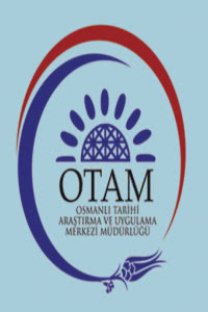Vergi kayıtları, mahsul miktarları ve fiyatlar: vakıfların rüsûm, a‘şâr-ı hubûbât ve fürûht-ı hubûbât defterleri
Tax registries, quantity and price of crops: tax registries, tithe registries and crop sales registries belonging to waqfs
___
BARKAN, Ömer Lütfi, “Edirne ve Civarındaki Bazı İmaret Tesislerinin Yıllık Muhasebe Bilançoları”, Türk Tarih Belgeleri Dergisi, I/2, 235-377.FAROQHI, Suraiya, “Vakıf Administration in Sixteenth Century Konya, The Zaviye of Sadreddin-i Konevi”, Journal of the Economic and Social History of the Orient, XVII/2, 145-172.
FAROQHI, Suraiya, “Seyyid Gazi Revisited: The Foundation as Seen Through Sixteenth and Seventeenth-Century Documents”, Turcica, 13, 90-121.
FAROQHI, Suraiya, “A Great Foundation in Difficulties: or some evidence on economic contraction in the Ottoman Empire of the mid-seventeenth century”, Revue D’Histoire Magrebine, 47-48, 109-12.
FAROQHI, Suraiya, “Agricultural Crisis and the Art of Flute-Playing: The Wordly Affairs of the Mevlevi Dervishes (1595-1652)”, Turcica, XX, 43-69.
GÜRAN, Tevfik, Ekonomik ve Mali Yönleriyle Vakıflar, İstanbul, Kitabevi.
İNALCIK, Halil, “Capital Formation in the Ottoman Empire”, Journal of Economic History, XXIX-1, 97-140.
İNALCIK, Halil, “The Ottoman State: Economy and Society, 1300-1600”, An Economic and Social History of the Ottoman Empire, 1300-1914 içinde, Eds. Halil İnalcık with Donald Quataert, New York, Cambridge University Press.
ORBAY, Kayhan, “Detailed Tax Farm Registers and Arrears Registers as Sources of the Waqfs’ Financial Analyses”, Acta Orientalia: Academiae Scientiarum Hung., vol. 58, no. 4, 331-347.
ORBAY, Kayhan, “On the Mukâta’a Revenues and the Revenue Collection of Bâyezîd II’s waqf in Amasya”, Wiener Zeitschrift für die Kunde des Morgenlandes (WZKM), vol. 95, 139-162.
ORBAY, Kayhan, “Structure and the Content of the Waqf Account Books as sources for Ottoman Economic and Institutional History”, Turcica, Revue D’Etudes Turques, vol. 39, 3-48.
ORBAY, Kayhan, “Distributing Food, Bread and Cash: Vakıf Taamhoran and Fodulahoran Registers as Archival Sources for Imarets”, Feeding People, Feeding Power; Imarets in the Ottoman Empire, içinde, İstanbul, Eren Yayıncılık, 171-196.
ORBAY, Kayhan, “16. ve 17. Yüzyıllarda Bursa Ekonomisi: Sultan Çelebi Mehmed Yeşil İmaret’inin Mali Tarihi (1553-1650)”, A.Ü. Osmanlı Tarihi Araştırma ve Uygulama Merkezi (OTAM) Dergisi, sayı 22, 125-158.
ORBAY, Kayhan, “Tarihsel Fiyatların Elde Edilmesi ve Endekslemeler Konusunda Bazı Notlar”, A.Ü. Dil ve Tarih-Coğrafya Fakültesi Dergisi, basılacak, 48/1, 87-98.
ORBAY, Kayhan, “Vakıfların İktisadi Boyutu; Yeni Arşiv Kaynakları ve İktisadi Yaklaşımlar”, 6. Uluslararası Türk Kültürü Kongresi Bildirileri içinde, Ankara, Pulat, cilt III, 1463-1474.
ORBAY, Kayhan, “Gazi Süleyman Paşa Vakfı’nın Mali Tarihi ve 17. Yüzyılda Trakya Tarımsal Ekonomisi”, A.Ü. Tarih Araştırmaları Dergisi, c.XXX, S. 49, Ankara 2011, s. 145-182.
PAMUK, Şevket, İstanbul ve Diğer Kentlerde 500 Yıllık Fiyatlar ve Ücretler, 1469-1998, Başbakanlık Devlet İstatistik Enstitüsü, Ankara 2000.
SİNGER, Amy, Constructing Ottoman Beneficence, An Imperial Soup Kitchen in Jerusalem, State University of New York Press.
UNAN, Fahri, Kuruluşundan Günümüze Fatih Külliyesi, Türk Tarih Kurumu, Ankara 2003.
YEDİYILDIZ, Bahaeddin, XVIII. Yüzyılda Türkiye’de Vakıf Müessesesi, Türk Tarih Kurumu, Ankara 2003.
YERASIMOS, Stéphane, “Le Waqf du Defterdar Ebu’l Fazl Efendi et ses Bénéficiaires”, Turcica, tome 33, 7-33.
- ISSN: 1019-469X
- Yayın Aralığı: 2
- Başlangıç: 2006
- Yayıncı: Ankara Üniversitesi Osmanlı Tarihi Araştırma ve Uygulama Merkezi
I. Bayezid ve Kadı Burhaneddin arasındaki çekişmede ıı. manuel palaiologos
Elizabeth A. ZACHARIADOU, Murat KEÇİŞ, Şahin ÇELER
10 Temmuz inkılâbının birinci yıldönümünde neyyir-i hakikat gazetesinin yayınladığı mecmua üzerine
1876 Meclis-i mebusanı ve seçim hazırlıkları
Denizaşırı dilenciliğe bir örnek: Marûni dilenciler
Sultan II. murad vakfı’nın edremit mukataaları (1530-1641)
XIX. Yüzyılın ortalarında Sinop’taki gayrimüslimlerin sosyal ve ekonomik yapısı
İstanbul hirâmi Ahmet Paşa camisi
Buz temininde sanayileşme ve osmanlı imparatorluğu’nda kurulan buz fabrikaları
